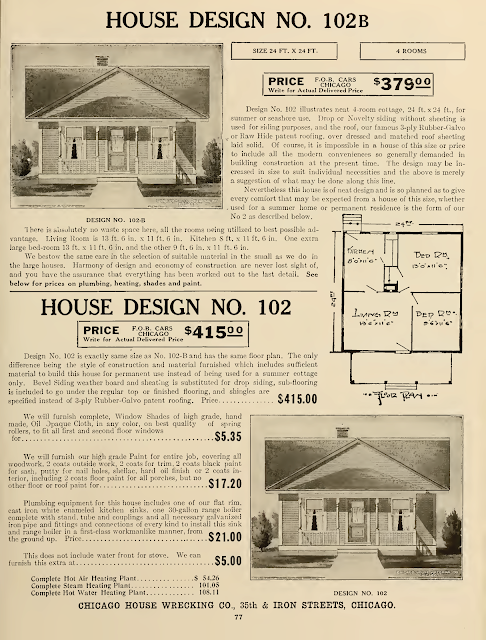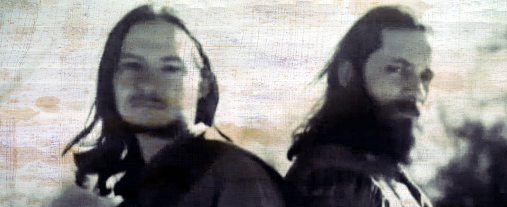The Chicago House Wrecking Company dismantled the Ferris wheel at the Chicago World's Fair in 1893. Then they blew up the Ferris wheel for scrap at the St. Louis World's Fair in 1904. Because the axle was so big and heavy, it was buried in Forest Park in St. Louis, Missouri, in May of 1906.
The Indiana Dunn's Bridge Myth — According to James Cooper's "Iron Monuments" book, which documents Indiana's historic bridges, there are rumors that the Dunn's Bridge Truss arches came from the 1893 World Columbian Exposition Ferris wheel. This claim is not realistic, especially considering that the arches are not concentric. Another rumor claims Dunn's bridge came from the interior or exterior of the Indiana Building at the 1904 St. Louis World Fair. I'd don't see it from this postcard picture, do you?
In 2007, Sheldon Breiner, a famous geophysicist, used a magnetometer to locate the Ferris wheel's axle, which he found 200 feet from where the Ferris wheel's foundation stood.
From 1908 to 1920, there was an overlap in operations between Chicago House Wrecking Company and Harris Brothers Company. In 1910, the Chicago House Wrecking Company offered its first book of plans, which is noted in the Catalog of Copyright Entries for January-December 1910 in the Library of Congress.
In 1912, Harris Bros. began selling plans and offering with them a list of building materials, though at that time the houses were not pre-cut. (The competition among like-minded lumber dealers was intense and each was jumping on the innovations of its competitors.)
By 1918, Harris Brothers Company had established themselves with "The Harris Way" and its distinguishing details which included liberal terms and "money back for waste" as well as other unconditional guarantees.
Like other companies, Harris offered a service to produce "special plans to order," which meant that they would take a customer's sketches and create plans to their specifications. Customers ordering in sufficient quantity could negotiate cut-to-fit manufacturing as well, "when houses are ordered in quantities, sufficiently large to warrant" production.
Most of the Midwest kit home manufacturers, Aladdin, Sears, Montgomery Ward (meeting their demand for kit homes, subcontracted the manufacturing to Gordon Van Lines and sold kit homes from about 1921 to 1931), Lustron, and others delivered their products regionally, so the vast majority of the homes designed and manufactured by Harris are found in Illinois, Ohio, and Michigan through testimonials shown in the catalog range from builders as far-flung as Maine to Kansas.
Though the history of Harris Brothers remains murky, a quotation from the 1920 catalog distances the operations of Harris Brothers from the Chicago House Wrecking Company:
After filing for bankruptcy in 1933-34, the company reincorporated as "Iron Street Lumber Company."
In 1947, Iron Street Lumber Company, by then a large construction company, purchased Silcrest Window Manufacturing Company. The company remained in business until 1960, producing doors and windows from their plant in Wausau, Wisconsin. Silcrest became Harris-Crestline Corp. in 1960 after the company was sold. Sentry Insurance Company bought the Harris-Crestline Corp. in 1981.
Compiled by Dr. Neil Gale, Ph.D.
 |
| This is a Chicago House Wrecking Company, Kit No. 84, from the 1910 catalog. It is identified by the bay windows on the first and second floors and the shed dormer over the porch. This house is located at 1318 South 7th Avenue, Maywood, Illinois. |
In 1912, Harris Bros. began selling plans and offering with them a list of building materials, though at that time the houses were not pre-cut. (The competition among like-minded lumber dealers was intense and each was jumping on the innovations of its competitors.)
By 1918, Harris Brothers Company had established themselves with "The Harris Way" and its distinguishing details which included liberal terms and "money back for waste" as well as other unconditional guarantees.
Like other companies, Harris offered a service to produce "special plans to order," which meant that they would take a customer's sketches and create plans to their specifications. Customers ordering in sufficient quantity could negotiate cut-to-fit manufacturing as well, "when houses are ordered in quantities, sufficiently large to warrant" production.
Most of the Midwest kit home manufacturers, Aladdin, Sears, Montgomery Ward (meeting their demand for kit homes, subcontracted the manufacturing to Gordon Van Lines and sold kit homes from about 1921 to 1931), Lustron, and others delivered their products regionally, so the vast majority of the homes designed and manufactured by Harris are found in Illinois, Ohio, and Michigan through testimonials shown in the catalog range from builders as far-flung as Maine to Kansas.
 |
| "Presto-Up," was Harris Bros. patented, bolt-together houses, garages and barns etc. |
 |
| "Presto-Up," was Harris Bros. patented, bolt-together house kits, garages, barns, etc. |
"In our earlier career we were incorporated under the name of the Chicago House Wrecking Company. For years we were known to the public, under this name, as the Bargain Mart of the world, but as time passed we were, by reason of the great savings made on new lumber and mill-work materials purchased for customers, forced into the new material business and we realized that the old name gave the wrong impression. Millions of dollars have been spent by us to acquaint the buying public with the old name, still the four Harris Brothers, the men who built this great institution decided that their best interests demanded a change of name that would not mislead. Remember we furnish new material only."Harris Brothers expanded, opening the Harris Millwork plant at 1349-1451 W. 35th Street, Chicago, which was on 25 acres, housing their plant, warehouse and offices for the company.
After filing for bankruptcy in 1933-34, the company reincorporated as "Iron Street Lumber Company."
In 1947, Iron Street Lumber Company, by then a large construction company, purchased Silcrest Window Manufacturing Company. The company remained in business until 1960, producing doors and windows from their plant in Wausau, Wisconsin. Silcrest became Harris-Crestline Corp. in 1960 after the company was sold. Sentry Insurance Company bought the Harris-Crestline Corp. in 1981.
Compiled by Dr. Neil Gale, Ph.D.





























































































































